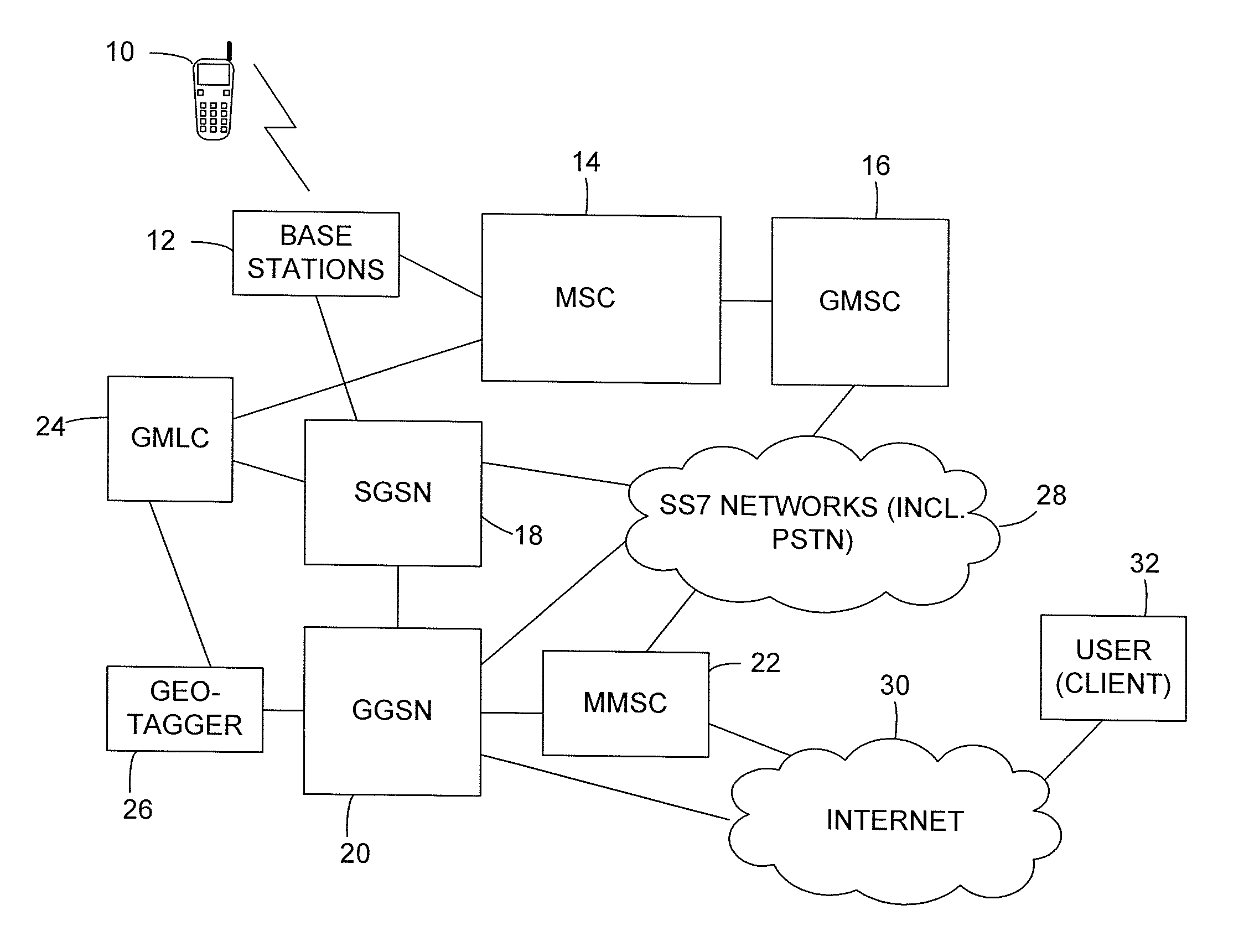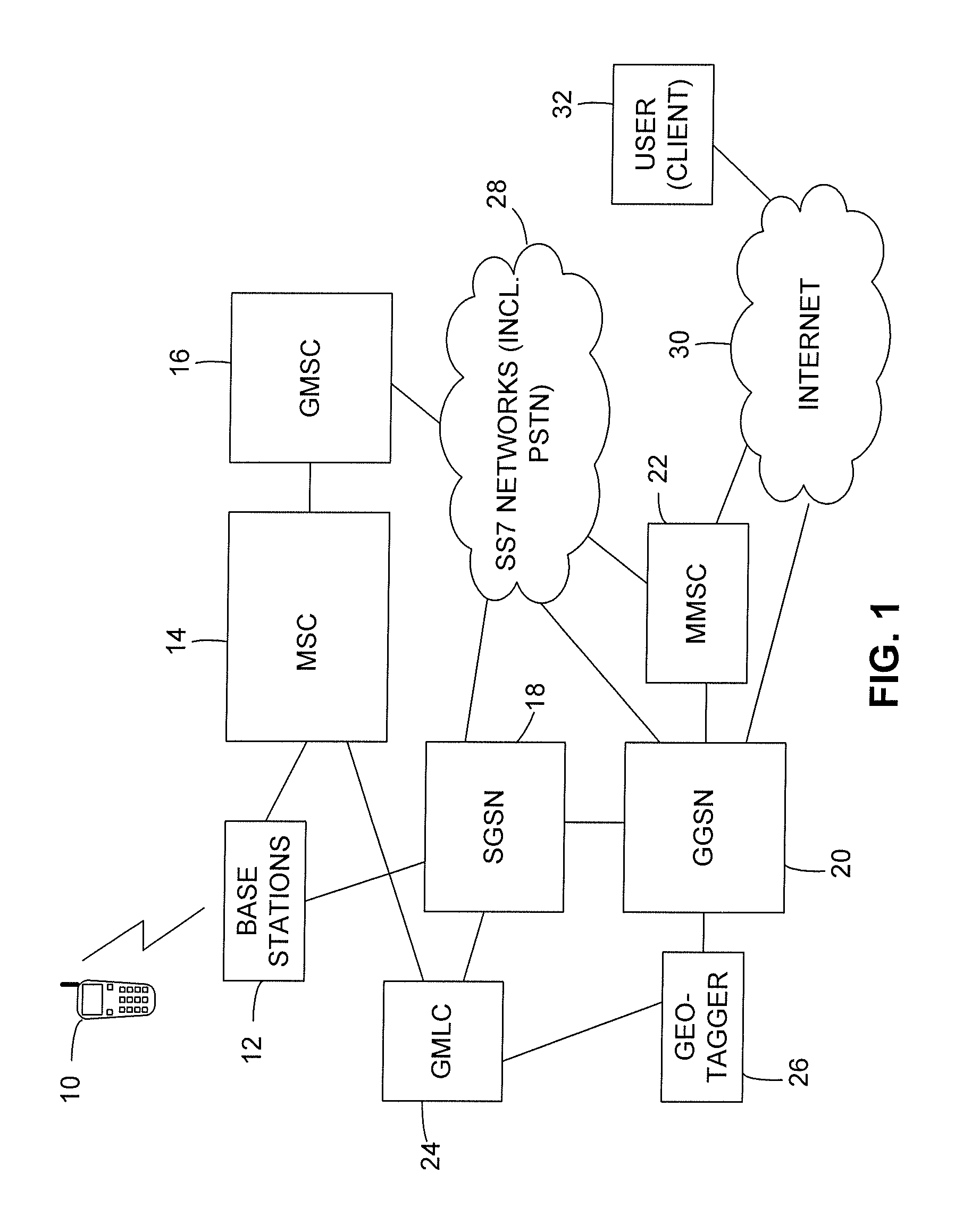Dynamic geotagging of photographs
a geotagging and dynamic technology, applied in the field of wireless telecommunications networks, can solve the problems of not being able to quickly drain the cell phone battery of the gps receiver, not being able to quickly determine the location without assistance data, and not being able to incorporate a more powerful gps receiver
- Summary
- Abstract
- Description
- Claims
- Application Information
AI Technical Summary
Benefits of technology
Problems solved by technology
Method used
Image
Examples
Embodiment Construction
[0017]In the following description, like reference numerals indicate like components to enhance the understanding of the invention through the description of the drawings. Also, although specific features, configurations, arrangements and steps are discussed below, it should be understood that such specificity is for illustrative purposes only. A person skilled in the relevant art will recognize that other features, configurations, arrangements and steps are useful without departing from the spirit and scope of the invention.
[0018]As illustrated in FIG. 1, in an exemplary embodiment of the invention a mobile telephone (also referred to as a cell phone or mobile station) or other user equipment (UE) 10 communicates with a wireless telecommunications network (also referred to as a cellular telecommunications network) having an architecture generally in conformance with the GPRS and UMTS standards. As known in the art, GPRS is a standard that has been adopted by many network service pr...
PUM
 Login to View More
Login to View More Abstract
Description
Claims
Application Information
 Login to View More
Login to View More - R&D
- Intellectual Property
- Life Sciences
- Materials
- Tech Scout
- Unparalleled Data Quality
- Higher Quality Content
- 60% Fewer Hallucinations
Browse by: Latest US Patents, China's latest patents, Technical Efficacy Thesaurus, Application Domain, Technology Topic, Popular Technical Reports.
© 2025 PatSnap. All rights reserved.Legal|Privacy policy|Modern Slavery Act Transparency Statement|Sitemap|About US| Contact US: help@patsnap.com



